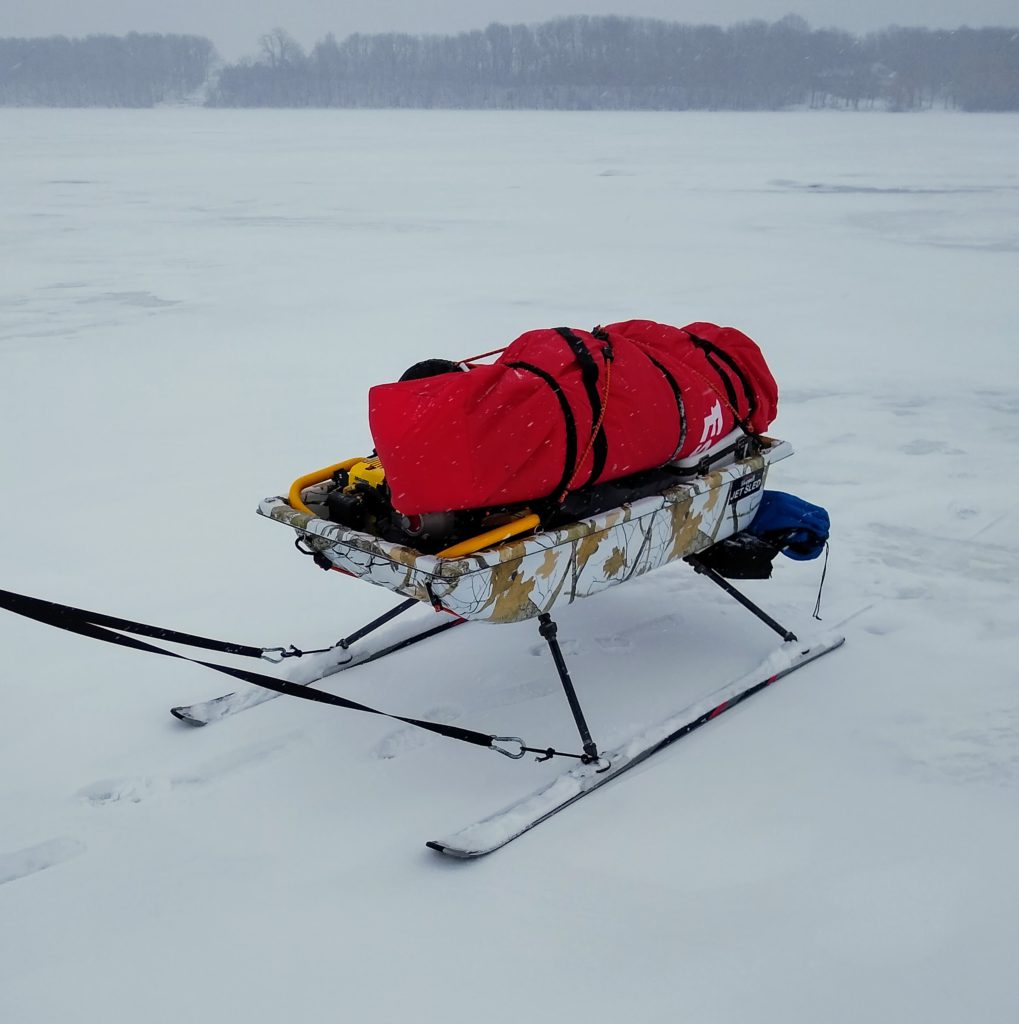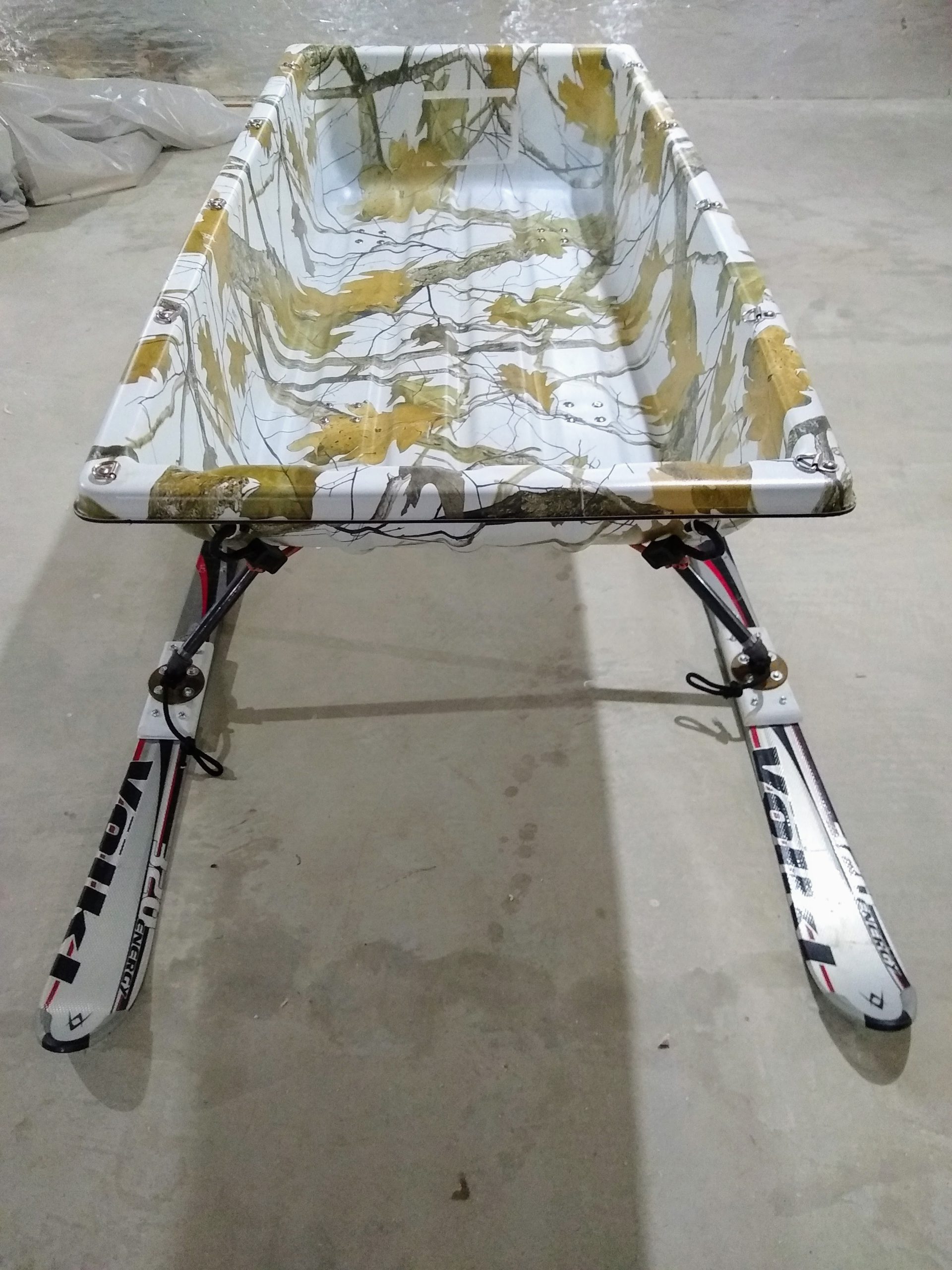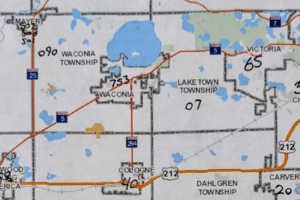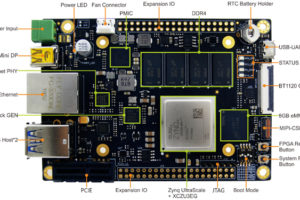I love ice fishing, which shouldn’t be confused with, “I love catching fish.” That’s the goal, and it’s always a bonus, but to get out in the fresh air on a wide open lake when cooped up at home during winter is always something I look forward to, and in the cold state of Minnesota, there’s plenty of opportunity for that. Although I could go on and on about all my equipment, this post will be discussing my ski sled build.

Table of Contents
Gear Hauling
Many people wait for enough ice to drive their vehicle out on the ice, which alleviates the need to haul equipment over long distances. I, however, am not a fan of taking my vehicle out on the lake, so more often then not I will walk out to my spot. This requires a means to haul everything needed for the day, which is typically done with some form of sled. I initially purchased a Shappell Jet Sled which worked fine, but had considerable drag and was exhausting to pull on and off the ice. This got me thinking how I could reduce drag, and that’s when I began building my ski sled.

Skis
First step was to acquire skis. After searching several used equipment resources online, I bought some used downhill skis. The brackets to attach boots to were no longer needed so I stripped down the skis bare. It took a bit of thought to figure out where to attach the legs, but I assumed the boot position was the “optimal” balance point, and evenly spaced the legs from there, trying to align with the angle of the pipe fittings, which brings me to my next design decision, the legs.

Galvanized Pipe Fittings
There was one design aspect to this build that was absolutely necessary, and that was modularity. I needed to be able to disassemble this down to its elements so that it could fit in my car trunk. There are plenty of obvious solutions one can choose for legs such as wood, welded steel, etc… but I wanted something off the shelf and weather resistant, thus the pipe fittings. This choice wasn’t the cheapest option, as all the different fittings and pipe was relatively expensive (~100$), but I could easily get what I needed at the local hardware store with plenty of options for me to customize the angle and length of the legs. As you can see I have a union which allows quick assembly/disassembly, and the legs can be threaded off the skis as well, though I often just leave them attached.

A wooden board was routed smooth on the edges and bolted down through the skis, counter sinking the heads so they don’t create resistance. I treated the bottom of the skis with wax and re-apply once a year.


Maximized Storage
As is with the skis, the pipe fittings are mounted to the sled with a routed piece of wood. Ideally a thick metal plate would be better (future upgrade) as this setup only supports maybe 100 pounds, I am not really setup to augment metal, so I went with the wood. Because the sled has ridges, I made relief cuts so the wood can lay snug to the sled. I also added a few under sled D ring tie downs since the sled sits around 15 inches off the ground and that space can be used to store contents underneath in both the front and back of the sled. These D ring tie downs are placed around the outer edge of the top of the sled, allowing me to secure the contents of the sled quickly and easily.

Harness
One other aspect of hauling gear that bothered me was having to hold on to a rope while walking. Sounds ridiculous, but walking this way for a long distance with weight can become awkward and tiresome, so I bought a sled hardness. These are usually used for weight training, but in my case this allows me to pull the sled hands free and in a way that is very comfortable. At first I attached this to the front of my sled, but soon realized it was better to pull at the base of the front legs, giving some ability for the skis to stay above the snow.

Compact Gear
Overall I’ve been very satisfied with how this sled turned out. As you can see above, the sled is a nice place to store stuff up off the snow and at an easy level to reach while out fishing. It also breaks down nicely and fits in the trunk of my car with the rest of my gear as seen below.

This amount of effort isn’t for everyone, but I did love working on the project. It’s a very unique item that makes ice fishing that much easier, and lends itself well to my need for a compact fit in my car for transport. As Red Green always said, “keep your stick on the ice.”


